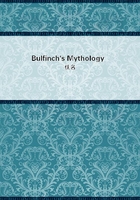
第116章
Pythagoras. Egyptian Deities. Oracles The teachings of Anchises to AEneas, respecting the nature of the human soul, were in conformity with the doctrines of the Pythagoreans. Pythagoras (born, perhaps, about five hundred and forty years B.C.) was a native of the island of Samos, but passed the chief portion of his life at Crotona in Italy. He is therefore sometimes called "the Samian," and sometimes "the philosopher of Crotona." When young he travelled extensively and is said to have visited Egypt, where he was instructed by the priests in all their learning, and afterwards journeyed to the East, and visited the Persian and Chaldean Magi, and the Brahmins of India.
But Pythagoras left no writings which have been preserved. His immediate disciples were under a pledge of secrecy. Though he is referred to by many writers, at times not far distant from his own, we have no biography of him written earlier than the end of the second century of our era. In the interval between his life and this time, every sort of fable collected around what was really known of his life and teaching.
At Crotona, where he finally established himself, it is said that his extraordinary qualities collected round him a great number of disciples. The inhabitants were notorious for luxury and licentiousness, but the good effects of his influence were soon visible. Sobriety and temperance succeeded. Six hundred of the inhabitants became his disciples and enrolled themselves in a society to aid each other in the pursuit of wisdom; uniting their property in one common stock, for the benefit of the whole. They were required to practise the greatest purity and simplicity of manners. The first lesson they learned was SILENCE; for a time they were required to be only hearers. "He (Pythagoras) said so," (Ipse dixit,) was to be held by them as sufficient, without any proof. It was only the advanced pupils, after years of patient submission, who were allowed to ask questions and to state objections.
Pythagoras is said to have considered NUMBERS as the essence and principle of all things, and attributed to them a real and distinct existence; so that, in his view, they were the elements out of which the universe was constructed. How he conceived this process has never been satisfactorily explained. He traced the various forms and phenomena of the world to numbers as their basis and essence. The "Monad," or UNIT, he regarded as the source of all numbers. The number TWO was imperfect, and the cause of increase and division. THREE was called the number of the whole, because it had a beginning, middle, and end; FOUR, representing the square, is in the highest degree perfect; and TEN, as it contains the sum of the first three prime numbers (2+3+5=10. ONE is not counted, as being rather the source of number than a number itself) comprehends all musical and arithmetical proportions, and denotes the system of the world.
As the numbers proceed frm the Monad, so he regarded the pure and simple essence of the Deity as the source of all the forms of nature. Gods, demons, and heroes are emanations of the Supreme;and there is a fourth emanation, the human soul. This is immortal, and when freed from the fetters of the body, passes to the habitation of the dead, where it remains till it returns to the world to dwell in some other human or animal body, and at last, when sufficiently purified, it returns to the source from which it proceeded. This doctrine of the transmigration of souls (metempsychosis), which was first Indian and Egyptian, and connected with the doctrine of reward and punishment of human actions, was the chief cause why the Pythagoreans killed no animals. Ovid represents Pythagoras addressing his disciples in these words: "Souls never die, but always on quitting one abode pass to another. I myself can remember that in the time of the Trojan was I was Euphorbus, the son of Panthus, and fell by the spear of Menelaus. Lately, being in the temple of Juno, at Argos, I recognized my shield hung up there among the trophies.
All things change, nothing perishes. The soul passes hither and thither, occupying now this body, now that, passing from the body of a beast into that of a man, and thence to a beast's again. As wax is stamped with certain figures, then melted, then stamped anew with others, yet is always the same wax, so the soul, being always the same, yet wears at different times different forms.
Therefore, if the love of kindred is not extinct in your bosoms, forbear, I entreat you, to violate the life of those who may haply be your own relatives."Shakespeare, in the Merchant of Venice, makes Gratiano allude to the metempsychosis, where he says to Shylock:
"Thou almost mak'st me waver in my faith, To hold opinion with Pythagoras, That souls of animals infuse themselves Into the trunks of men; thy currish spirit Governed a wolf; who hanged for human slaughter Infused his soul in thee; for thy desires Are wolfish, bloody, starved, and ravenous."The relation of the notes of the musical scale to numbers, whereby harmony results from vibrations in equal times, and discord from the reverse, led Pythagoras to apply the word "harmony" to the visible creation, meaning by it the just adaptation of parts to each other. This is the idea which Dryden expresses in the beginning of his song for St. Cecilia's Day:
"From harmony, from heavenly harmony This everlasting frame began;>From harmony to harmony Through all the compass of the notes it ran, The Diapason closing full in Man."In the centre of the universe (as Pythagoras taught) there was a central fire, the principle of life. The central fire was surrounded by the earth, the moon, the sun, and the five planets.